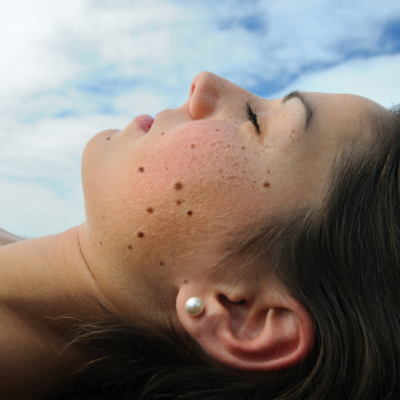That Rash Around Your Mouth: All About Perioral Dermatitis
Recently, one of our California Skin Institute board-certified dermatologists saw a new patient with a challenging skin issue. A vibrant woman in her 40s, she was concerned about a circle of raised red spots surrounding her mouth.
“Doctor, what is it?” she asked. The doctor told her. It was perioral dermatitis.
Perioral dermatitis is a benign but upsetting skin condition that appears as a red, scaly, pimply rash around the mouth. It can also occur on the skin folds at the base of the nose, or around the eyes where it is referred to as periorificial dermatitis. Although it can affect anyone, it occurs primarily in children and women.
Possible Causes of Perioral Dermatitis
What causes perioral dermatitis? We dermatologists wish we had the answer. At this point, the cause remains unclear and medical research on the topic continues. Different things may cause perioral dermatitis in different people. As well, over time, different things could trigger an outbreak in the same person, adding to the mystery around what causes perioral dermatitis. What we do know is: the condition is not contagious. A person cannot develop symptoms from someone else or pass it on through any sort of contact.
Here are some possible causes reported in dermatology studies:
Topical steroids – The use of steroid creams, gels and lotions on the skin has been linked to the development of perioral dermatitis. This can pose a challenge because topical steroids may have been prescribed for other skin conditions such as eczema and rosacea.
Nasal steroids – Perioral dermatitis has also been reported to occur with use of nasal steroids whether a gel, cream or inhalant.
Infections – Some researchers suggest infectious sources such as mites or yeast infection caused by Candida Albicans.
Toothpaste, gum and fillings – Resin dental fillings, resin-containing chewing gum and fluoride toothpaste have been implicated in perioral dermatitis. However, each of these possible triggers have only been reported in small numbers.
Cosmetic products – Cosmetic products including moisturizer, foundation, and sunscreens used in combination, or sometimes alone, may trigger perioral dermatitis.
Intrinsic factors – Many scientists believe that a combination of genetic and hormonal factors interacting with one or more of the above agents could explain why perioral dermatitis appears in some people but not others.
While you cannot do much about your genes or your dental fillings, other possible causes mentioned above can be explored with your California Skin Institute board-certified dermatologist. Through a careful process of elimination, it may be possible to see some improvement. Your dermatologist may also prescribe additional treatment as needed.
Diagnosis and Treatment
Because other skin conditions such as rosacea, acne and seborrheic dermatitis can appear similarly to perioral dermatitis, it is important to seek a professional diagnosis.
Once a diagnosis has been made, your California Skin Institute dermatologist will develop a treatment plan for you. Although it will be tailored just for you, it will likely be a regimen that requires you to:
- Stop using any hydrocortisone cream on your skin or any other preparation with corticosteroids.
- Take a prescribed antibiotic such as tetracycline or erythromycin, either in a topical or oral form.
- Switch to fragrance-free gentle skin care products for sensitive skin.
Be aware that it may take anywhere from several weeks to months for any treatment to show results. The process takes patience, but is necessary to determine which treatment may work best for you. Perioral dermatitis can recur. Your California Skin Institute dermatologist is your best ally in keeping the skin condition under control. Make an appointment today.



 / 291 Reviews
/ 291 Reviews